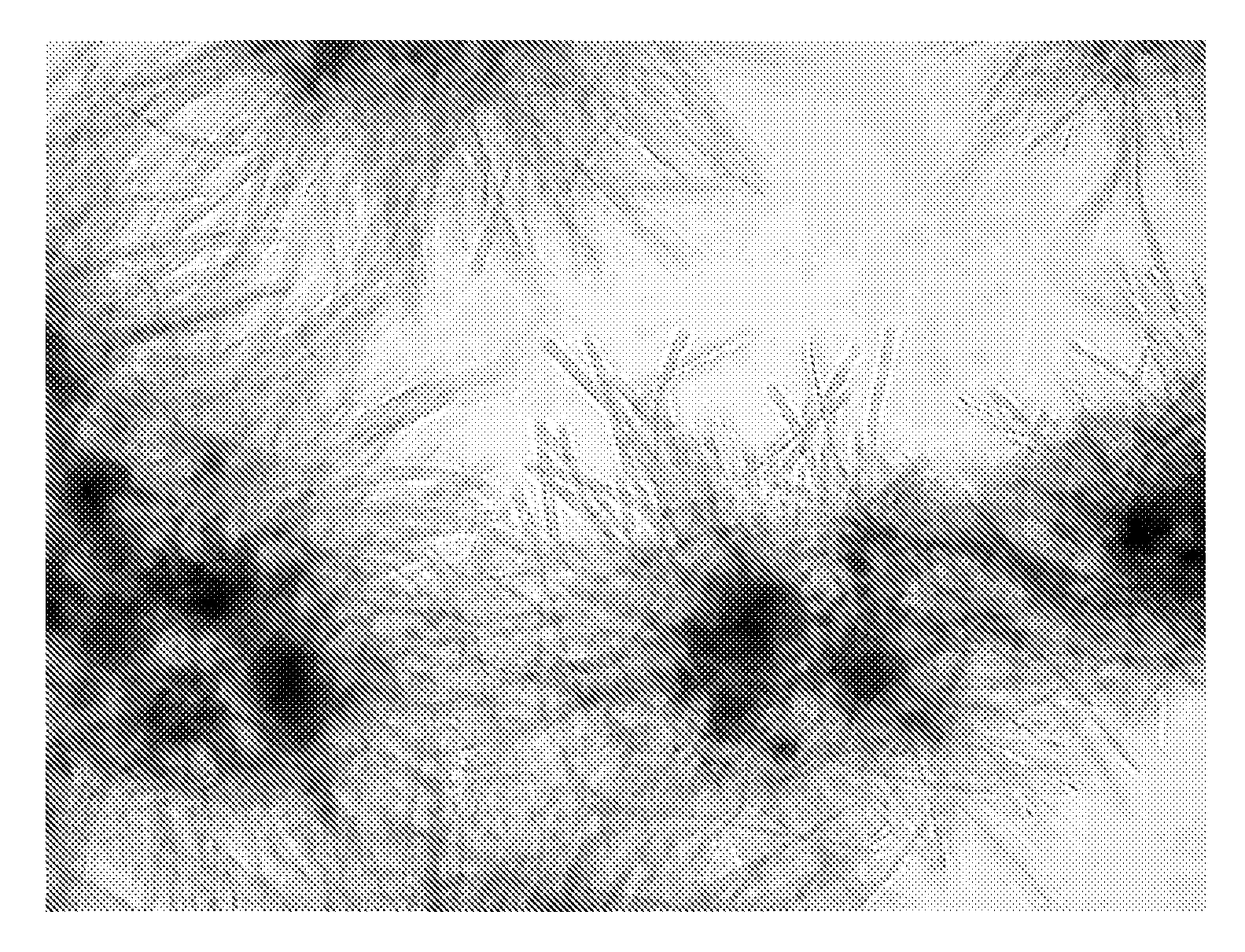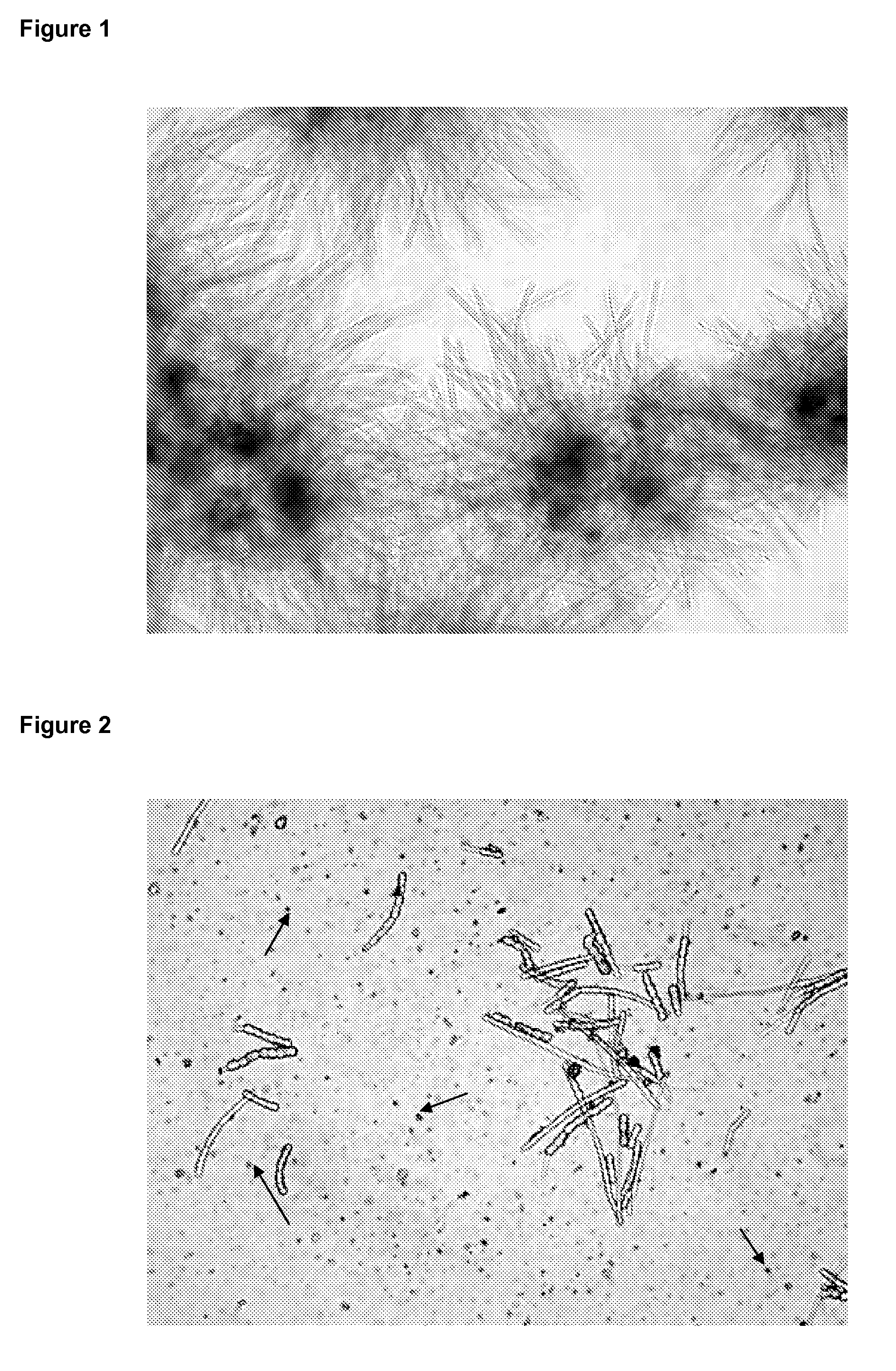Method for the submerged cultivation of filamentous organisms
a technology of filamentous organisms and cultivation methods, which is applied in the field of submerged cultivation of filamentous organisms, can solve the problems of major challenges in process engineering, loss of newtonian and rheological properties of fermentation broth in the course of cultivation, and high biotechnological potential of higher fungi, etc., and achieves the effects of short time, reduced transformation efficiency, and high throughput analysis
- Summary
- Abstract
- Description
- Claims
- Application Information
AI Technical Summary
Benefits of technology
Problems solved by technology
Method used
Image
Examples
example 2
[0038]In the following example of an experiment, the effectiveness of the method of the invention on the growth of Caldariomyces fumago (DSM 1256) during fermentation processes in a bioreactor was tested.
Preculture
[0039]From an agar plate that has been completely overgrown with Caldariomyces fumago, a piece of overgrown agar approximately 1 cm×1 cm in size was stamped out and placed in a 100 ml Erlenmeyer flask. The Erlenmeyer flask was then filled with 30 ml of potato-glucose medium (from Example 1) and incubated for seven days while being shaken at 180 rpm and incubated at 27° C. Next, the culture was comminuted with the aid of an Ultra-Turrax (30 seconds, stage 3).
[0040]In a bioreactor (KLF 2000, Bioengineering) with a capacity of 3.7 L, fermentation was to be done with a total of 2.6 L (fructose-minimal medium). To that end, the bioreactor was filled with 2200 ml of fructose solution (40 g / L) and 10 g / L each of the particles according to the invention comprising alum...
example 3
[0044]The method of the invention exhibits a marked effect on the morphology of Penicillium digitatum (DSM 62840), which in the submerged cultivation exhibits a growth in round pellets of 5 to 60 mm in diameter.
Preculture
[0045]From an actively growing mother culture in a test tube with oblique agar, using a sterile inoculation eyelet, a small piece of mycelium was scratched off and placed in 50 ml of Penicillium medium in a 100 ml Erlenmeyer flask. After cultivation for two days at 200 rpm on the shaker at room temperature, round pellets formed, with a diameter of 4 to 8 mm. With the aid of an Ultra-Turrax (20 seconds, stage 4), the pellets were mechanically comminuted and the culture was homogenized.
[0046]In a 300 ml Erlenmeyer flask, 1.5% (w / v) of the particles of the invention (aluminum oxide Alcoa A-350; Serva Heidelberg) were weighed and autoclaved in 5 ml of citrate buffer (100 mM), pH 6.5, for 20 minutes at 121° C. After the addition of 95 ml Penicillium medium...
example 4
[0049]With Penicillium chrysogenum (DSM 848), it was possible by using the method of the invention to achieve a pronounced reduction in the pellet size.
Preculture
[0050]To the freeze-dried pellet of P. chrysogenum mother culture, 1 ml of Penicillium medium (from Example 3) was added. After an incubation period of 30 minutes at room temperature, the suspension of the prepared culture was stirred with a sterile inoculation loop. Next, 50 ml of Penicillium medium was inoculated with 100 μl of the suspension in a 100 ml Erlenmeyer flask. Cultivation was done for two days on the shaker at 190 rpm and at room temperature.
[0051]For inoculating the primary cultures, 1.5% (w / v) each of the aluminum oxide (SERVA, Alcoa A-305) and talcum (Sigma-Aldrich, talc powder, 243604) were autoclaved in 5 ml of citrate buffer (100 mM), pH 6.5, in a 300 ml Erlenmeyer flask for 20 minutes at 121° C. After the addition of 95 ml of Penicillium medium, inoculation was done with 1 ml of the two-d...
PUM
 Login to View More
Login to View More Abstract
Description
Claims
Application Information
 Login to View More
Login to View More - R&D
- Intellectual Property
- Life Sciences
- Materials
- Tech Scout
- Unparalleled Data Quality
- Higher Quality Content
- 60% Fewer Hallucinations
Browse by: Latest US Patents, China's latest patents, Technical Efficacy Thesaurus, Application Domain, Technology Topic, Popular Technical Reports.
© 2025 PatSnap. All rights reserved.Legal|Privacy policy|Modern Slavery Act Transparency Statement|Sitemap|About US| Contact US: help@patsnap.com


